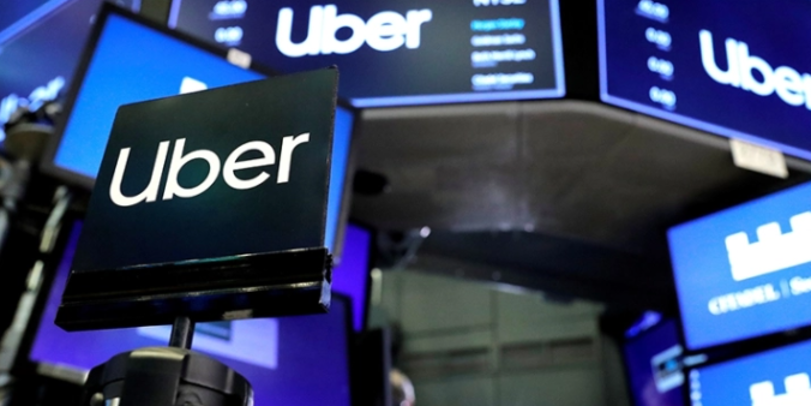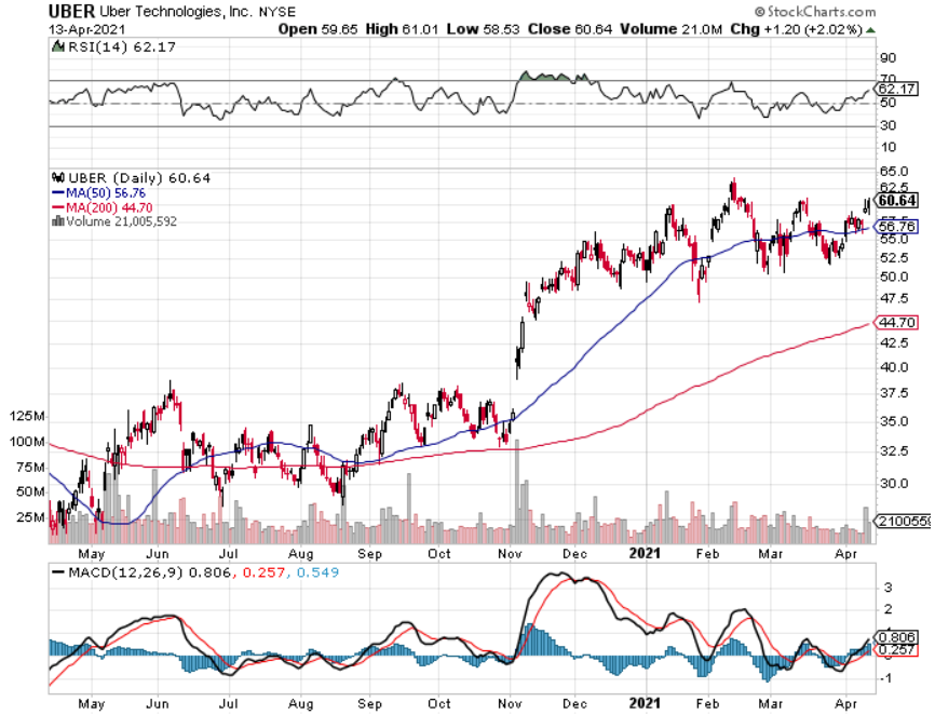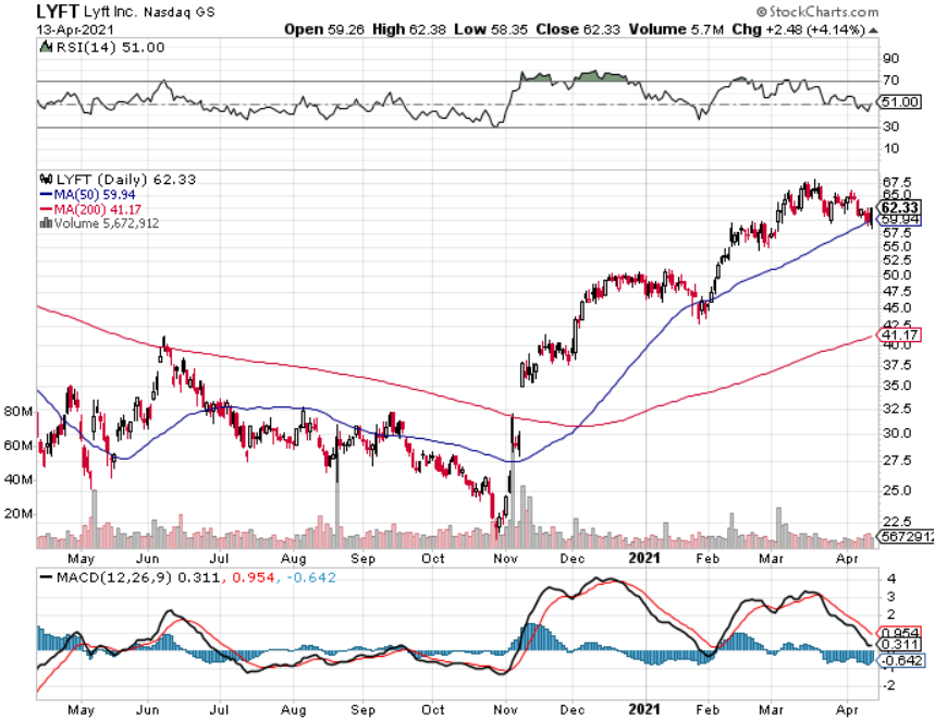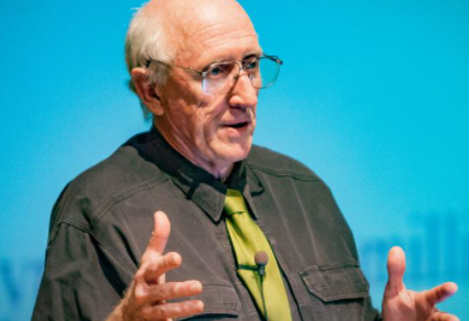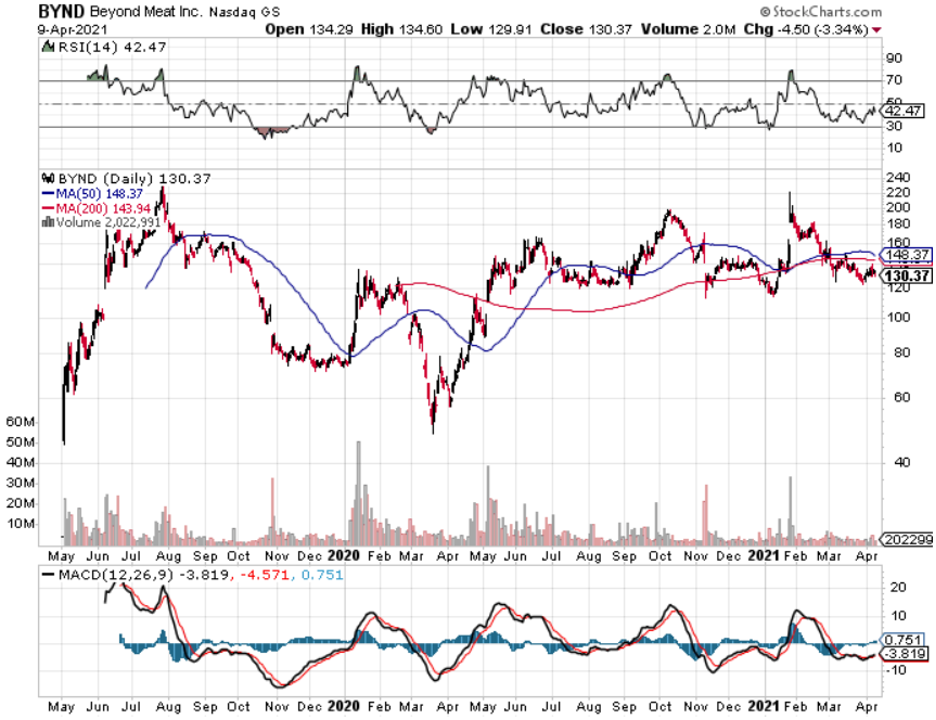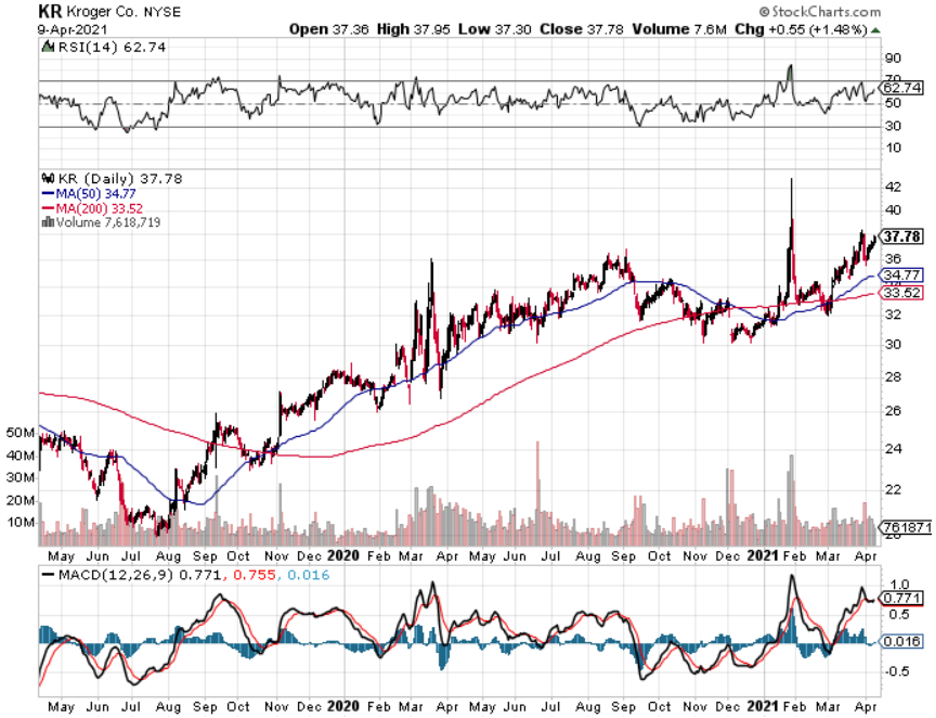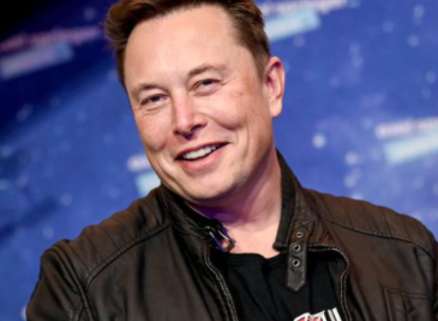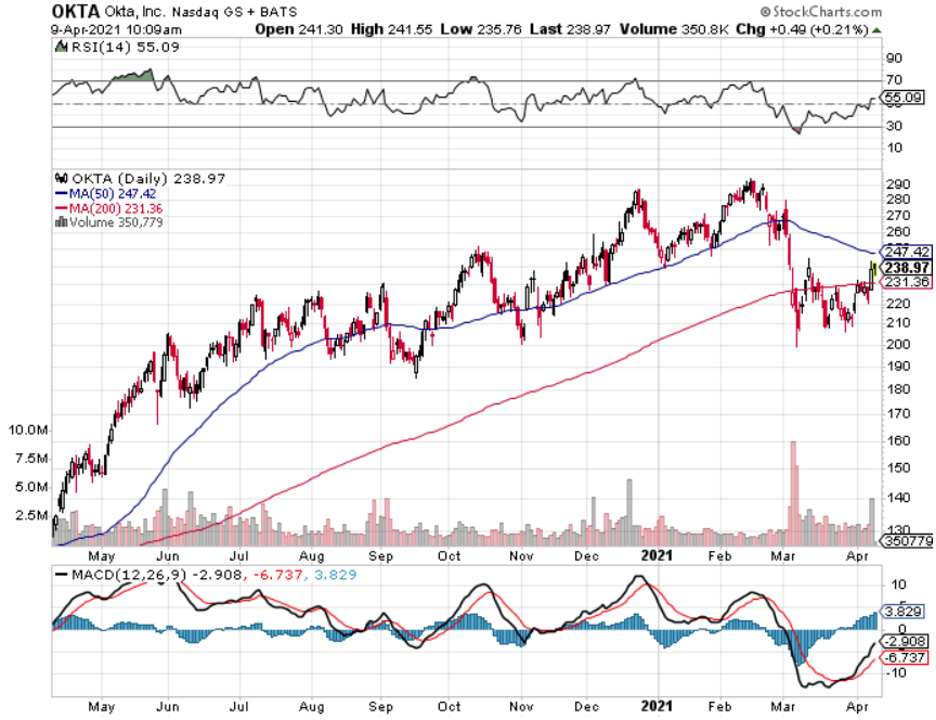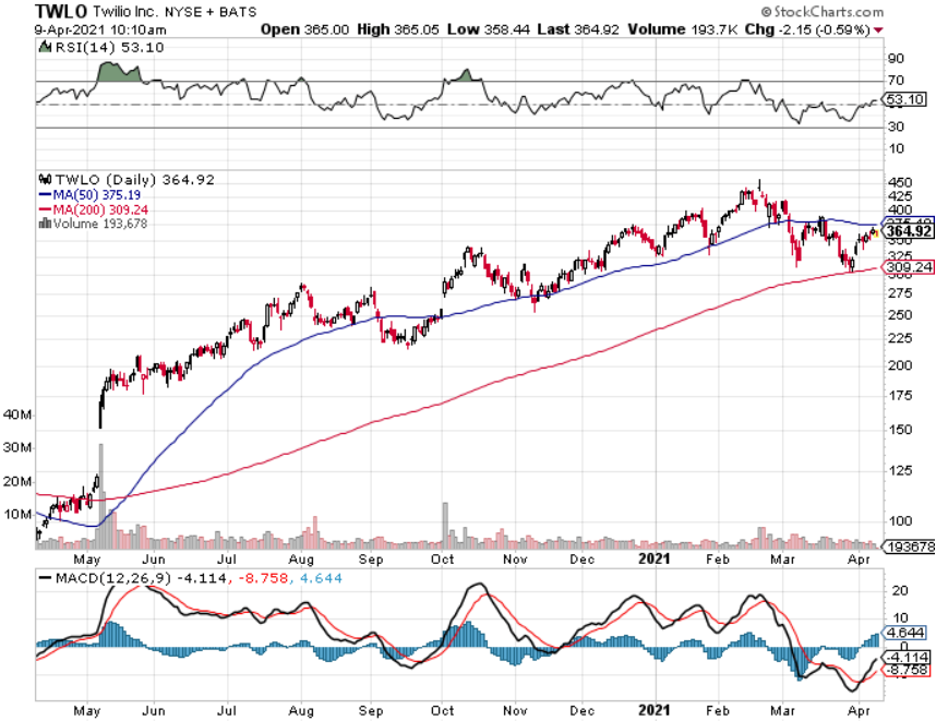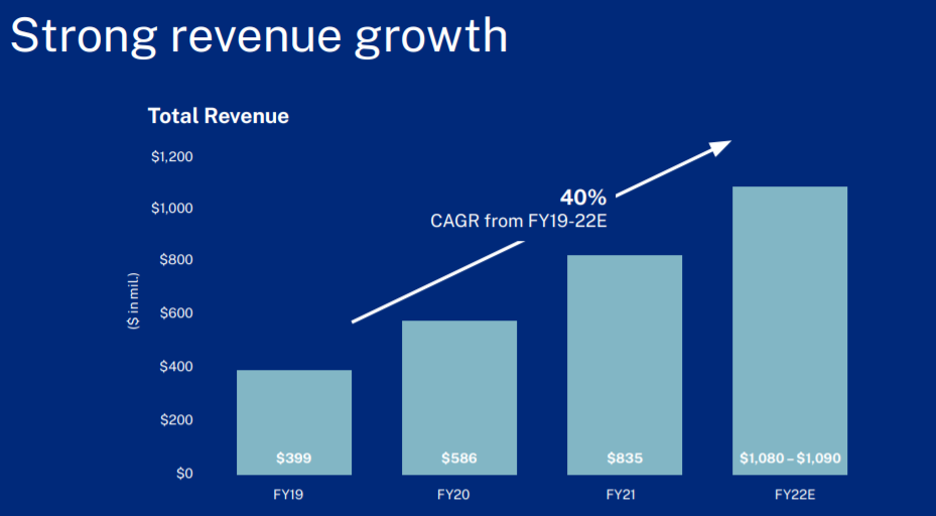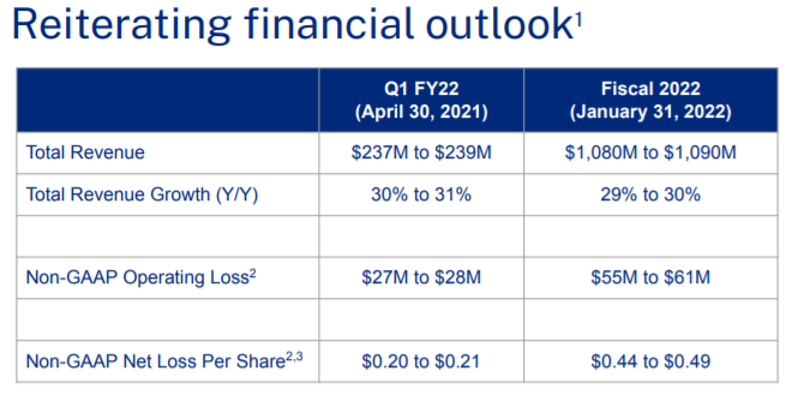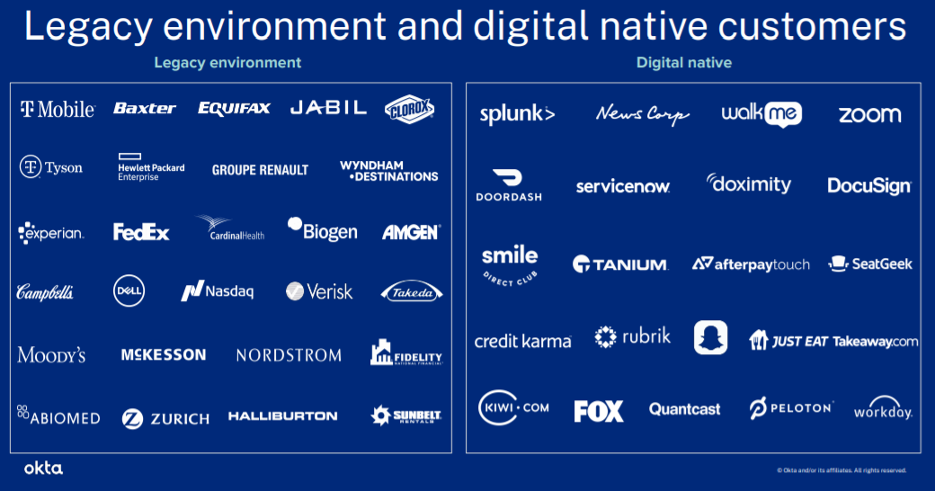“Every smart person that I admire in the world, and those I semi-fear, is focused on this concept of crypto for a reason. They understand that this is the driving force of the fourth industrial revolution: steam engine, electricity, then the microchip - blockchain and crypto is the fourth.” – Said American Entrepreneur Brock Pierce
Mad Hedge Technology Letter
April 14, 2021
Fiat Lux
Featured Trade:
(A 2021 TECH DARLING)
(UBER), (LYFT)
Uber (UBER) is a solid tech investment for the remainder of 2021, and this is me saying that when I don’t even like their company business model.
The biggest gap up in shares usually occurs when a company goes from flat-out terrible to the level just above that and that’s what is happening to Uber in 2021.
Why have they been so bad lately?
Uber’s Mobility gross bookings, or ride-sharing revenue, was $6.8 billion, which was down 47% year on year and revenue of only $1.5 billion.
Uber was never profitable, to begin with, not even close, and for COVID to gut their main business in 2020, investing in shares became even less appetizing.
Or were they?
Ironically enough, the California ride-sharing company was able to compensate during the pandemic by delivering food, a very non-tech type of business.
Delivery revenue of $1.4 billion, up 220%, significantly outpaced gross bookings growth and delivery revenues take rate was 13.5%, up 391 basis points year on year and up 21 basis points quarter on quarter.
Not only did the delivery revenue become almost equal to its ride-sharing revenue in such a short time span, but their “take rate” nudged up which is measured as the percentage of what they accrue from each $1 in delivery.
The momentum allowed Uber to triple its shares from March 2020 lows on the back of a reinvigorated delivery service, trillions of printed money, and a broad-based rally that swept up Uber.
Trust me, Uber doesn’t own any worthwhile intellectual property that is going to differentiate itself from the competition, but they are part of a duopoly with Lyft (LYFT) that makes 2021 so intriguing.
Reading the 2021 tea leaves, it's hard not to love this company as tourism, outdoor mobility, and intercity mobility will reverse and people will start paying uber for rides to go to bars and house parties.
Uber indicated just that with a teaser report before the real earnings come out showing that total gross bookings as of March 2021 reached the highest monthly level in the company's nearly 12-year history.
Mobility posted its best month since the pandemic started in March 2020, passing a $30B annualized gross bookings run rate. Average daily gross bookings were up 9% month-over-month.
Delivery set another all-time record, crossing $52B annualized gross bookings run rate in March, up over 150% on the year.
Uber says the rideshare business recovery and continuing Eats demand have customers outpacing the number of drivers and couriers.
The company ended the Form 8-K on a down note, letting investors know that after a court order, Uber must reclassify UK drivers as employees.
The company expects to record a “significant accrual” due to higher British employment costs in Q1 with the majority expected to reduce total and mobility revenues and revenue take rates but will be excluded from adjusted EBITDA results.
I must say that it’s quite irresponsible of management to just slide this “significant accrual” off the balance sheet as it could turn into something major if other big markets similar to London force Uber to reclassify workers as employees.
This is by far the biggest risk moving forward in 2021, but I doubt that other European locales will have the balls to say no to Uber.
Management reiterated that they remain on track to turn the EBITDA profitable in 2021, but then again, the EBITDA is quite substantial which is a management trick that needs to be banned in corporate America.
I believe that management keeps moving the goalposts by trying hard to please the incremental investor with alternative metrics, but that doesn’t take away from the immense potential of the back half of 2021.
Uber is poised to seriously outperform as people have been quarantined inside for over a year now and are waiting to explode out of their front door.
The company has burnt through over $15 billion in cash since 2019 and the stock has tripled, after stripping out a decline in food deliveries later this year, I believe the strength in rideshare revenue will end up with Uber having some quite rosy numbers.
Call it a net positive after you minus out the delivery revenue which is poised to shrink in the latter half of the year.
Thus, I will stamp Uber with a short-term and medium-term conviction buy, but a long-term sell because I just don’t see a pathway yet to become a heavy hitter, and Uber’s accounting gimmicks are a red flag.
“Once a new technology rolls over you, if you're not part of the steamroller, you're part of the road.” – Said Writer Stewart Brand
Mad Hedge Technology Letter
April 12, 2021
Fiat Lux
Featured Trade:
(SHOULD I BUY THE BEYOND MEAT DIP?)
(BYND), (KR), (IMPOSSIBLE FOODS)
Beyond Meat (BYND) will most likely retrace back to $90 from its current share price of $130.
The pandemic was a nightmare for most food companies and for the ones that deliver products to restaurants, it was a catastrophe.
BYNDs net revenues of $101.9 million in the fourth quarter of 2020, an increase of 3.5% compared to the fourth quarter of 2019, were in line with expectations of atrocious numbers.
Growth companies are expected to grow 40% year over year each quarter and in a year where many tech companies experienced 5 years of digital transformation in 1, BYNDs performance was quite pitiful.
It could have been worse for BYND.
The loss they experienced in the food service channel was difficult, but sales were partly made up by growth in net revenues in the fourth quarter driven by a 7% increase in volumes sold largely aided by the retail (this is what they call eating BYND burgers at home) channel.
Q4 retail channel sales were up a full 85% year over year, which helped mitigate the 54% year-over-year decline in Foodservice.
The pandemic’s damaging effect was large on supplying places including amusement parks, sports arenas, academic institutions, hotels, corporate catering services, and others.
The 85% uptick in retail growth couldn’t compensate for the drop off in food service channels much like Uber and the Uber Eats conundrum.
Households continued to buy BYND products, and they bought them more frequently.
On average, they're spending more per household on non-meat products.
Another silver lining is in international retail, they saw a sequential acceleration of growth from Q3 to Q4.
International retail net revenues increased 139% year over year, driven mainly by distribution gains in Canada, including in the club stores, where they had no presence in the prior year.
As 2021 develops, we will see a flip in numbers as consumers start to visit their favorite eateries and are less inclined to grill BYND burgers on the patio grill.
This only injects more uncertainty into the numbers for BYNDs management and the headway they made in the retail channel could be mostly given back.
Naturally, BYND burgers just isn’t that software program that is essential, and the business of food tech is still fighting with the business of normal food like real meat such as cow-based beef and pig-based pork.
Many software programs simply do not have to duel with their analog selves which is why any sort of meaningful investments into a company like BYND is illogical.
Anyone who loves eating plant-based burgers should eat these protein-based burgers and leave the stock alone.
What’s on the horizon for BYND?
One word – competition.
Impossible Foods Inc. is planning to go public in the next year and is exploring either an initial public offering or a merger in a SPAC deal.
This would value the company at around $10 billion.
Once a hard-to-find item available at only expensive, trendy eateries, Impossible products are now on menus at national chains including Burger King.
Fast-food chains have fared significantly better than independent restaurants since the pandemic began, giving Impossible an added boost.
It has also been growing its grocery presence, cutting its suggested retail prices by 20% at U.S. grocery stores in February in its ongoing push to compete with real beef.
BYNDs management downplayed pandemic pressures to the business as “transitory”, but the problem with that is they are transiting right into fierce competition who have signaled willingness to enter into a price war against them.
Others like Kroger (KR) have bigger pockets and will have used the pandemic to plot their path against BYND.
Basically, what I am saying is that the first-mover advantage has disappeared forever, an unfortunate consequence for BYNDs future trajectory, and I don’t see a lot of upside to underlying shares in the short term.
In the short-medium term, Beyond Meat will first, need to rejuvenate their foodservice business and prove to investors that covid didn’t just knock it out.
Second, there is no guarantee that BYNDs food service will come back right away, this could be a hard slog for a few years to reach 2019 numbers and that’s still an if.
And third, they will need to prove they are better than Impossible Foods and the rest of them while most likely lowering the prices of their product.
Unluckily, the pandemic didn’t deliver 5 years of innovation in 1 year for BYND and there are more questions than answers moving forward.
Outside the internet, the presence of numerous physical inputs has the chance to go haywire which is why I sometimes believe the bore of buying Microsoft or Alphabet until death isn’t such a bad idea.
Investors might want to keep their tech investors from ever exposing themselves to real-world problems even if I think Uber is a great investment for 2021.
I would recommend investors to avoid this crowded space of food tech and let them cudgel each other down to zero. Whoever wins in the end might be worth a flier.
“An asteroid or a supervolcano could certainly destroy us, but we also face risks the dinosaurs never saw: An engineered virus, nuclear war, inadvertent creation of a micro black hole, or some as-yet-unknown technology could spell the end of us.” – Said Founder and CEO of Tesla Elon Musk
Mad Hedge Technology Letter
April 8, 2021
Fiat Lux
Featured Trade:
(SHOULD I BUY CLOUD FIRM OKTA IN APRIL?)
(OKTA), (TWLO)
The excess liquidity fueling the U.S. financial markets signal that investors are picking up the tab for heavy loss-making tech companies like never before.
Only in the U.S. can this happen at the scale it is happening as the U.S. controls its own currency, Central Bank, and possess the most reliable IPO process.
This phenomenon effectively supports a mindset of tech start-ups putting off profits for years and sometimes even decades.
Too much money chasing too few ideas and we have seen numerous examples of this with investors turning to ultra-leverage to figure out how to deliver real gains to investors.
Another heavy loss-making cloud company that I recommended buying “at the bottom” last March was identity-verification software maker Okta (OKTA) whose business was dramatically uplifted from the shift to remote work during the pandemic.
The recommendation worked like a charm with the stock essentially doubling from the time of that call.
But what’s in store for this password company moving forward?
First, let's rewind to the beginning of March when investors dumped the stock after a disappointing 2022 forecast and suffered from rumblings of the company paying too much to acquire Auth0 for about $6.5 billion.
The 30% sell-off was another example of growth companies’ ugly habit of volatility making it hard to time the entry points for heavy pocketed investors.
In the most recent analysts’ day, Okta projected sales will grow 30% in each of the next three years.
Revenue at the end of fiscal 2024 will be close to an annualized $2 billion, or about $500 million for the fourth quarter that year.
Yes, this is still a small company by any metric.
Demand for the software maker’s products, which help workers access corporate systems and consumers authenticate their identity online, has increased as more employees logged on from home in 2020.
For the 12 months through March 1, Okta was used more than 52 billion times to log into an app or website, almost 200% growth from the same period a year earlier.
Okta has retraced some of its losses when it announced it introduce 2 new products.
One, Identity Governance Administration, generates reports which show in an organization who has permission to see which parts of its systems.
The idea is to make sure people who’ve left the company or have changed roles don’t retain access to unauthorized areas.
Next, Privileged Access Management, governs who can view and change an organization’s critical systems.
The new areas expand the size of Okta’s total addressable markets to about $80 billion.
Management said these protections have become more critical as employees continue to work for home.
Many data breaches come down to server accounts that weren’t locked down when they should have been.
Admins change jobs at a rapid pace as companies look to poach talent more than ever now.
If it wasn’t the cause of the breach, it was a vector that the attackers used once they got in.
Being the cloud growth company it is, with only a market capitalization of $30 billion, the new announcements was the catalyst for Okta shares to surge 8% during intraday trading.
This is typical growth company price action.
The company is also dogged by persistent rumors it might sell to a larger tech company and I would say it’s a little surprising that the company is “buying growth” at such an early stage of its growth cycle.
But again, the subsidies keep flowing to these upstart tech guys because liquidity levels and bold risk appetites allow these types of aggressive financing that affect management decisions.
Overpaying to grow is where we are now in the tech cycle with the Central Bank effectively not allowing this bull market to die.
Okta CEO Todd McKinnon said he wants it to be one of five or six independent software clouds that every company needs.
And I also want to be one of five or six men in the world that every girl in the world wants to date.
I get it that McKinnon wants identity and access to remain Okta’s specialty rather than being subsumed into one of the other categories. Microsoft, which has identity software products that predate its cloud businesses, is already Okta’s main rival.
I would agree that Okta is prime for investors to buy the dip, but I would recommend traversing to higher waters because there are better cash burning, cloud names out there that are growing faster than Okta.
Honestly, Okta should be growing more for its small size, and “buying growth” seems like they are worried about an imminent collapse of growth which is a worrying sign.
Yes, I must agree that competition is stiff these days in the cloud ecosystem.
My conclusion with Okta is that any investor looking to buy Okta should instead buy communications-as-a-cloud firm Twilio (TWLO).
This is the communications platform operating behind the scenes of behemoths like Airbnb and Uber.
They have a 3-year revenue growth rate of 66% and grew 65% year-over-year last quarter.
That is what I call consistent!
And that is what I call cash-burning growth!
TWLO is also exactly double the size of OKTA at $62 billion and is predicting next quarter to grow 44% to 47%.
According to IDC, investments in digital transformation will nearly double by 2023 to $2.3 trillion, representing more than 50% of total IT spending worldwide, and it’s clear to me that more of this capital will flow into TWLO than OKTA.
OKTA is just a one-trick pony, but TWLO is a complex integrated system that Uber can’t live without. Many companies can live without Okta and plug in a substitute. The revenue is just way stickier with TWLO, and the strategic position is superior.
OKTA is a solid buy the dip candidate, but just buy TWLO instead.
“Bitcoin will do to banks what email did to the postal industry.” – Said Founder of the Swedish Pirate Party Rick Falkvinge
Legal Disclaimer
There is a very high degree of risk involved in trading. Past results are not indicative of future returns. MadHedgeFundTrader.com and all individuals affiliated with this site assume no responsibilities for your trading and investment results. The indicators, strategies, columns, articles and all other features are for educational purposes only and should not be construed as investment advice. Information for futures trading observations are obtained from sources believed to be reliable, but we do not warrant its completeness or accuracy, or warrant any results from the use of the information. Your use of the trading observations is entirely at your own risk and it is your sole responsibility to evaluate the accuracy, completeness and usefulness of the information. You must assess the risk of any trade with your broker and make your own independent decisions regarding any securities mentioned herein. Affiliates of MadHedgeFundTrader.com may have a position or effect transactions in the securities described herein (or options thereon) and/or otherwise employ trading strategies that may be consistent or inconsistent with the provided strategies.





